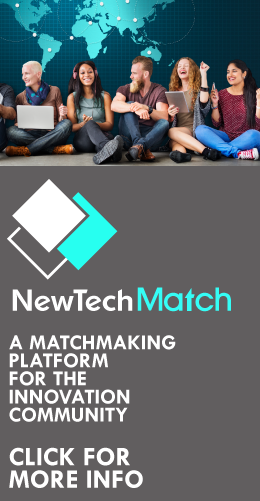The P&C insurance industry is at a turning point. With low growth rates and intense competition, P&C insurers must rethink their business strategies. Next-generation connected insurance products need to be a part of that. Here’s How.
The rise of the Internet of Things (IoT), 5G technology, and more powerful AIs have paved the way for developing a 2nd Generation of connected insurance products. These products leverage advanced data analytics and connectivity to improve risk management and customer experience. Digital Leaders are looking to these products to differentiate themselves in an increasingly competitive market.
P&C insurers face several challenges to grow profitably in today’s rapidly changing market. As an example, the “hard” market trend has slowed down. Global commercial insurance prices rose 9 percent in the second quarter of 2022, marking the sixth consecutive quarter of slowing premium increases. This slowdown is coupled with the emergence of new macroeconomic factors, such as inflation and emerging risks, creating uncertainty and opportunities.
Moreover, insurers are facing increasing claims costs and pressure on expense ratios. There is a growing gap in talent and skills as the future of work evolves through automation, digital, and AI processes. Insurers must address these challenges while adapting and changing risk assessment models, services, and capabilities, including innovation in product and solution offerings. Failing to do so could result in suboptimal portfolio decisions and underwriting strategies, leading to a decline in profitability and missed growth opportunities. P&C insurers that can stay ahead of market cycles and build operational and financial resilience by leveraging the capabilities of this new generation of connected capabilities will emerge as winners.
Second-generation connected P&C products offer several solutions to the problems that the insurance industry has grappled with for decades. These products can improve underwriting accuracy, reduce claims frequency and severity, and enhance the customer experience. By leveraging data collected from connected devices, insurers can gain better insights into the risks they are insuring, enabling them to price policies more accurately and avoid adverse selection. Connected P&C products can also improve loss prevention and mitigation, allowing insurers to reduce the frequency and severity of claims.
In addition, connected P&C products can enhance the customer experience by providing policyholders greater transparency, convenience, and personalized service. By enabling policyholders to access their policy information, file claims, and receive real-time updates via mobile apps and other digital channels, insurers can improve customer satisfaction and loyalty, increasing retention rates and long-term profitability.
Integrating IoT, 5G, and advanced AI can transform (P&C) products into connected offerings that address new risks, improve underwriting, reduce claims, and increase customer satisfaction. Usage-based insurance (UBI) uses telematics and other IoT sensors to capture data about the driver’s behavior, driving conditions, and vehicle usage patterns. This allows insurers to tailor premiums and adjust the policyholder’s risk profile, incentivizing safe driving behavior. Smart home insurance products use IoT sensors and AI algorithms to detect potential hazards and prevent claims by detecting water leaks, smoke, or temperature changes that could indicate a fire and alert homeowners before a disaster occurs.
Commercial insurers can also use IoT sensors and advanced analytics to improve the accuracy of risk assessment, underwriting, and claims handling. For instance, cargo insurers can use sensors to track the cargo’s location, condition, and temperature in transit and alert the owner in case of any deviation from the set parameters. IoT Sensors and Analytics can help insurers prevent claims and also helps reduce the risk of theft and damage to the cargo.
P&C insurers must address business and technical challenges to bring these products to market. Business challenges include integrating new technologies, identifying profitable products, and establishing partnerships with technology providers, while technical challenges include data privacy, cybersecurity, and compatibility.
Executives can help overcome these challenges by encouraging their teams to collaborate with technology providers to ensure compatibility and data security, invest in technologies that enable rapid product development, and use analytics to identify profitable products and ensure their customer-centricity. They can foster an innovation-friendly culture and encourage cross-functional teams to work together. By establishing partnerships with InsurTech companies, insurers can leverage InsurTech’s expertise in advanced technologies and agile product development. This will allow insurers to adopt a more customer-centric approach to addressing their customers’ problems, values, and goals.
Developing next-gen connected P&C products now can future-proof insurance companies by bringing in new skills, technologies, and partnerships that better prepare them to compete in the future. By investing in these products, insurers can build new partnerships with tech companies, IoT device manufacturers, and other players in the ecosystem, providing access to new data sources, customer insights, and technology platforms that can be leveraged to create new products and services.
Additionally, developing these products can help insurers create a more agile and flexible business model that can adapt to changing customer needs and market conditions, helping them stay relevant and competitive in an industry rapidly evolving with new technologies and business models.
In conclusion, P&C insurers must embrace next-gen connected insurance products to stay ahead of the curve and gain a competitive advantage. By addressing the challenges, adopting a customer-centric approach, and investing in new skills and technologies, insurers can successfully bring these products to market, meet evolving customer demands, and prepare for the future. Integrating IoT, 5G, and advanced AI is poised to transform the insurance industry, and P&C insurers that can stay ahead of market cycles and build operational and financial resilience will emerge as winners.
Let’s get started.
Mike Connor, CEO, SVIA
Your thoughts and comments are appreciated.








